33 start with G start with G

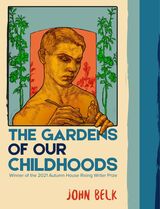
In this stunning debut, John Belk looks at the world of professional wrestling to excavate the real within the artificial and explore the projections we create, run from, and delight in. In The Gardens of Our Childhoods, the distance between spectacle and reality blurs.
Belk uses the spectacle of wrestling to stare deeply into American culture and masculinity, parsing the intersecting threads of patriarchy and gender, and unpacking identity formation and performance. As Belk pries into toxic masculinities, he leaves space also for tenderness, queerness, and resistance to normative structures, opening the potential for love and admiration. Populated by classic and contemporary wrestlers like André the Giant, Hulk Hogan, “Stone Cold” Steve Austin, Ricky Steamboat, Bruno Sammartino, Marcus “Buff” Bagwell, and more, this book is ultimately about the constant deconstruction and reconstruction of our identities that smudge fiction and reality. Like wrestlers in their operatic and winding storylines, we learn how to project and inhabit identities while growing into and fighting against the scripts we write for ourselves and those that are imposed on us.
The Gardens of Our Childhoods is the winner of Autumn House Press’s Rising Writer Prize in Poetry.
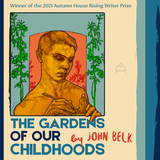
In this stunning debut, John Belk looks at the world of professional wrestling to excavate the real within the artificial and explore the projections we create, run from, and delight in. In The Gardens of Our Childhoods, the distance between spectacle and reality blurs.
Belk uses the spectacle of wrestling to stare deeply into American culture and masculinity, parsing the intersecting threads of patriarchy and gender, and unpacking identity formation and performance. As Belk pries into toxic masculinities, he leaves space also for tenderness, queerness, and resistance to normative structures, opening the potential for love and admiration. Populated by classic and contemporary wrestlers like André the Giant, Hulk Hogan, “Stone Cold” Steve Austin, Ricky Steamboat, Bruno Sammartino, Marcus “Buff” Bagwell, and more, this book is ultimately about the constant deconstruction and reconstruction of our identities that smudge fiction and reality. Like wrestlers in their operatic and winding storylines, we learn how to project and inhabit identities while growing into and fighting against the scripts we write for ourselves and those that are imposed on us.
The Gardens of Our Childhoods is the winner of Autumn House Press’s Rising Writer Prize in Poetry.
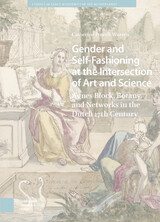
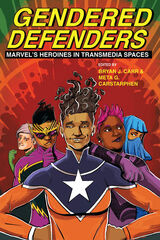
Gendered Defenders: Marvel’s Heroines in Transmedia Spaces delivers dynamic and original analyses of how women perform in super heroic spaces. Contributors from a range of disciplinary perspectives—communications, international relations, cultural and media studies, English, history, and public policy—take on Marvel’s representations of women and gender to examine how relations of power are (re)produced, understood, and challenged. Through vivid retellings of character-based scenarios, these essays examine Carol Danvers, Jessica Jones, Ms. Marvel, Shuri, Pepper Potts, Black Widow, and Squirrel Girl across media forms to characterize and critique contemporary understandings of identity, feminism, power, and gender.
Collectively, Gendered Defenders challenges notions about female identity while illuminating the multidimensional portrayals that are enabled by the form of speculative fiction. Making explicit the connections between women’s lived experiences and the imagined exploits of superheroines, contributors explore how these pop culture narratives can help us understand real-world gender dynamics and prepare pedagogical, political, and social strategies for dealing with them.
Contributors:
Bryan J. Carr, Meta G. Carstarphen, Julie A. Davis, Rachel Grant, Annika Hagley, Amanda K. Kerhberg, Gregory P. Perreault, Mildred F. Perreault, CarrieLynn D. Reinhard, Maryanne A. Rhett, Stephanie L. Sanders, J. Richard Stevens, Anna C. Turner, Kathleen M. Turner-Ledgerwood, Robert Westerfelhaus
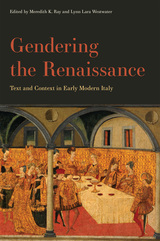

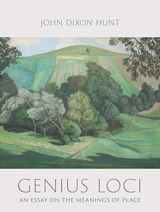
For ancient Romans, genius loci was literally “the genius of the place,” the presiding divinity who inhabited a site and gave it meaning. While we are less attuned to divinity today, we still sense that a place has significance. In this book, eminent garden historian John Dixon Hunt explores genius loci in many settings, including contemporary land art, the paintings of Paul and John Nash, travel writers such as Henry James, Paul Theroux, and Lawrence Durrell on Provence, Mexico, and Cyprus, and landscape architects who invent new meanings for a site. This book is a nuanced, thoughtful exploration of how places become more significant to us through the myriad ways we see, talk about, and remember them.
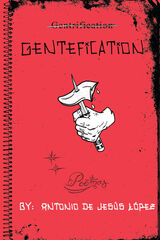
“Gentefication” nuances Latinidad as not just an immigration question, but an academic one. It deals with Latinx death not as the literal passing
of bodies, but as first tied with language. It asks, what are the hauntings of a tongue that is repeatedly told, ‘one must learn English in order to succeed in this country’? What is the psychological trauma deployed not by right-wing bigots, but of white liberal institutions that give scholarships to Latinx students, but nevertheless prop up white supremacy by viewing their payments as charity? How do Latinx students become complicit in this tokenizing? “Gentefication” wrestles with this ‘survivor’s guilt’ of higher education, of feeling as if you’re the only one among your homies that ‘made it.’ And in an American moment dealing with scandals across multiple universities this work is a timely intervention that advocates for first-generation audiences, for readers of color, and for all those vested in the protracted struggle for our fair shot.
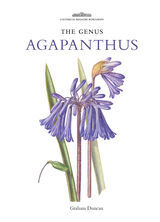
Renowned for its stunning blue flowers, agapanthus—sometimes known as the blue lily or lily of the Nile—is a group of rhizomatous plants native to southern Africa. First cultivated in the Netherlands in the late seventeenth century, it rose to prominence as a conservatory plant in England during the eighteenth and nineteenth centuries after certain varieties were found to be hardy enough to withstand the colder climate of the British Isles. Graham Duncan’s The Genus Agapanthus provides both a revised classification of this plant group and a superbly illustrated celebration of their unique beauty. Featuring new watercolors from South African artist Elbe Joubert and color photographs showing the species in their spectacular and varied natural habitats, the book also highlights a selection of more than 150 of the most notable agapanthus cultivars from growers across Europe, Africa, and Oceania. The agapanthus’s natural history is spotlighted as well, with comprehensive descriptions of each species, maps of their global distribution, and information on how to successfully cultivate, propagate, and care for them. This book’s blend of science, horticulture, and art makes it essential for all varieties of plant lovers.
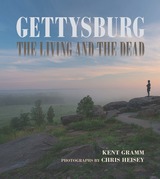
Creative nonfiction, fiction, dramatic dialogue, and poetry combine with full-color photographs to convey the essential reality of the famous battlefield as a place both terrible and beautiful. The living and the dead contained here include Confederates and Yankees, soldiers and civilians, male and female, young and old. Visitors to the battlefield after 1863, both well known and obscure, provide the voices of the living. They include a female admiral in the U.S. Navy and a man from rural Virginia who visits the battlefield as a way of working through the death of his son in Iraq. The ghostly voices of the dead include actual participants in the battle, like a fiery colonel and a girl in Confederate uniform, as well as their representatives, such as a grieving widow who has come to seek her husband.
Utilizing light as a central motif and fourscore and seven voices to evoke how Gettysburg continues to draw visitors and resound throughout history, alternately wounding and stitching the lives it touches, Gramm’s words and Heisey’s photographs meld for a historical experience unlike any other. Gettysburg: The Living and the Dead offers a panoramic view wherein the battle and battlefield of Gettysburg are seen through the eyes of those who lived through it and died on it as well as those who have sought meaning at the site ever since.
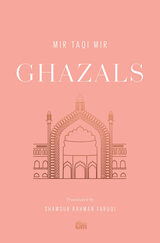
The finest ghazals of Mir Taqi Mir, the most accomplished of Urdu poets.
The prolific Mir Taqi Mir (1723–1810), widely regarded as the most accomplished poet in Urdu, composed his ghazals—a poetic form of rhyming couplets—in a distinctive Indian style arising from the Persian ghazal tradition. Here, the lover and beloved live in a world of extremes: the outsider is the hero, prosperity is poverty, and death would be preferable to the indifference of the beloved. Ghazals offers a comprehensive collection of Mir’s finest work, translated by a renowned expert on Urdu poetry.

Erica Reid’s debut collection, Ghost Man on Second, traces a daughter’s search for her place in the world after estrangement from her parents. Reid writes, “It’s hard to feel at home unless I’m aching.” Growing from this sense of isolation, Reid’s poems create new homes in nature, in mythology, and in poetic forms—including sestinas, sonnets, and golden shovels—containers that create and hold new realizations and vantage points. Reid stands up to members of her family, asking for healing amid dissolving bonds. These poems move through emotional registers, embodying nostalgia, hurt, and hope. Throughout Ghost Man on Second, the poems portray Reid’s active grappling with home and confrontation with the ghosts she finds there.
Ghost Man on Second is the winner of the 2023 Donald Justice Poetry Prize, selected by Mark Jarman.
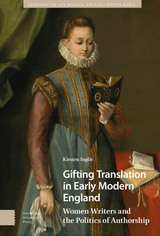
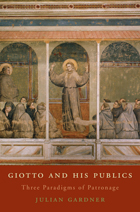
This probing analysis of three works by Giotto and the patrons who commissioned them goes far beyond the clichés of Giotto as the founding figure of Western painting. It traces the interactions between Franciscan friars and powerful bankers, illuminating the complex interplay between mercantile wealth and the iconography of poverty.
Political strife and religious faction lacerated fourteenth-century Italy. Giotto’s commissions are best understood against the background of this social turmoil. They reflected the demands of his patrons, the requirements of the Franciscan Order, and the restlessly inventive genius of the painter. Julian Gardner examines this important period of Giotto’s path-breaking career through works originally created for Franciscan churches: Stigmatization of Saint Francis from San Francesco at Pisa, now in the Louvre, the Bardi Chapel cycle of the Life of St. Francis in Santa Croce at Florence, and the frescoes of the crossing vault above the tomb of Saint Francis in the Lower Church of San Francesco at Assisi.
These murals were executed during a twenty-year period when internal tensions divided the friars themselves and when the Order was confronted by a radical change of papal policy toward its defining vow of poverty. The Order had amassed great wealth and built ostentatious churches, alienating many Franciscans in the process and incurring the hostility of other Orders. Many elements in Giotto’s frescoes, including references to St. Peter, Florentine politics, and church architecture, were included to satisfy patrons, redefine the figure of Francis, and celebrate the dominant group within the Franciscan brotherhood.
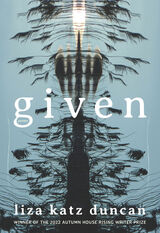
Liza Katz Duncan’s debut collection is a poignant exploration of the unpredictable shifts that shape our lives. Given considers the notions of home and family and how to survive the changes and losses associated with both. Duncan conjures her home, the New Jersey Shore, in clear and unsentimental lines: “Call of the grackle, / whine of the turkey vulture. Blighted clams, // raw and red in their half-shells.” Duncan’s poems also explore the devastation brought to this place and its community by Superstorm Sandy and the continued impacts of climate change.
Interwoven into this thread is the narrator’s miscarriage; the parallels between the desecrated landscape and the personal catastrophe further contribute to the layers of tenderness in this collection, as Duncan urges us to remember and to witness. Despite tragedy and loss, Given is imbued with persistent, dogged hope, showing how survival persists amongst the wreckage, and from this debris is a path towards healing our grief.
Given was the winner of 2022 Autumn House Rising Writer Prize in Poetry.

After World War II, the Western frontier of self-reinvention and spatial expansion opened up through the explosion of the global travel industry. The Global Frontier shows that a variety of postwar literary travelers sought personal freedom and cultural enrichment outside their nation’s borders, including Black, female, and queer writers. But the price of incorporation into a transnational leisure class was complicity in postwar American imperialism and the rejection of 1930s social commitments. Eric Strand argues that capitalist globalization has enabled creative expression for marginalized identities, and that present-day humanists are the descendants of writers such as William S. Burroughs, Saul Bellow, Richard Wright, and Elizabeth Bishop. Yet this personal liberation has accompanied a vast growth of social inequality, which can only be addressed by reorienting toward progressive nationalism and an activist state.

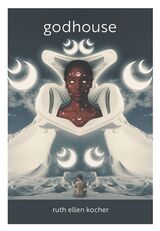
Starting with the idea that the human experience is the universe looking back at itself, godhouse takes the notion a few steps further by centering cosmology within a raced and gendered body. Ruth Ellen Kocher’s poems envision this body as a union of god and soul that, within our material world, encompasses love and hate, joy and despair. The body is a site of divine presence made mortal, electrified with the resonance of both the infinite and the human. In godhouse, we encounter the body as a site where the universe is made personal and celebratory, where the celestial endure the complications of flesh and friction forms between the glorious and the monstrous aspects of personhood.

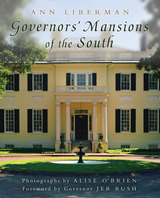

The Great Plains were once among the greatest grasslands on the planet. But as the United States and Canada grew westward, the Plains were plowed up, fenced in, overgrazed, and otherwise degraded. Today, this fragmented landscape is the most endangered and least protected ecosystem in North America. But all is not lost on the prairie. Through lyrical photographs, essays, historical images, and maps, this beautifully illustrated book gets beneath the surface of the Plains, revealing the lingering wild that still survives and whose diverse natural communities, native creatures, migratory traditions, and natural systems together create one vast and extraordinary whole.
Three broad geographic regions in Great Plains are covered in detail, evoked in the unforgettable and often haunting images taken by Michael Forsberg. Between the fall of 2005 and the winter of 2008, Forsberg traveled roughly 100,000 miles across 12 states and three provinces, from southern Canada to northern Mexico, to complete the photographic fieldwork for this project, underwritten by The Nature Conservancy. Complementing Forsberg’s images and firsthand accounts are essays by Great Plains scholar David Wishart and acclaimed writer Dan O’Brien. Each section of the book begins with a thorough overview by Wishart, while O’Brien—a wildlife biologist and rancher as well as a writer—uses his powerful literary voice to put the Great Plains into a human context, connecting their natural history with man’s uses and abuses.
The Great Plains are a dynamic but often forgotten landscape—overlooked, undervalued, misunderstood, and in desperate need of conservation. This book helps lead the way forward, informing and inspiring readers to recognize the wild spirit and splendor of this irreplaceable part of the planet.
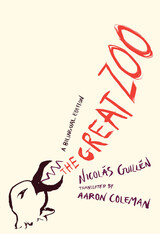
Born in Cuba to parents of African and European ancestry, Nicolás Guillén worked in printing presses and studied law before moving into Havana’s literary scene. A virtuosic maker and breaker of forms, Guillén rose to fame by transforming a popular form of Cuban music into poetry that called attention to the experience of Afro-Cuban people, and he continued to interweave his artistic and political commitments as he traveled the world.
Originally published in Spanish in 1967, The Great Zoo is a humorous and biting collection of poems that presents a fantastical bestiary of ideas, social concerns, landscapes, phenomena, and more. The “animals” on view in this menagerie include the Mississippi and Amazon Rivers, clouds from different countries, a singing guitar, a temperamental atomic bomb, blue-pelted police, a hurricane, the KKK, and the North Star, among many others. Translated by Aaron Coleman with a keen understanding of the contexts of colonial racialization, oppression, and exoticism, this bilingual edition stands as a testament to Guillén’s carnivalesque vision.

A gathering of poetic blossoms.
The Greek Anthology contains some 4,500 short Greek poems in the sparkling and diverse genre of epigram, written by more than a hundred poets and collected over many centuries. To the original collection, called the Garland (Stephanus) by its contributing editor, Meleager of Gadara (first century BC), was added another Garland, by Philip of Thessalonica (mid-first century AD) and then a Cycle by Agathias of Myrina (AD 567/8). In about AD 900 these collections (now lost) and perhaps others (also lost, by Rufinus, Diogenianus, Strato, and Palladas) were partly incorporated and arranged into fifteen books according to subject by Constantine Cephalas; most of his collection is preserved in a manuscript called the Palatine Anthology. A second manuscript, the Planudean Anthology made by Maximus Planudes in 1301, contains additional epigrams omitted by Cephalas.
Outstanding among the poets are Meleager, Antipater of Sidon, Crinagoras, Palladas, Agathias, and Paulus Silentiarius.
This Loeb edition of The Greek Anthology replaces the earlier edition by W. R. Paton, with a Greek text and ample notes reflecting current scholarship. Volume I contains the following: Book 1. Christian Epigrams; Book 2. Description of the Statues in the Gymnasium of Zeuxippus; Book 3. Epigrams in the Temple of Apollonis at Cyzicus; Book 4. Prefaces to Various Anthologies; Book 5. Erotic Epigrams.

Noble verse.
The Greek poetry of the archaic period that we call elegy was composed primarily for banquets and convivial gatherings. Its subject matter consists of almost any topic, excluding only the scurrilous and obscene. In this completely new Loeb Classical Library edition, Douglas Gerber provides a faithful translation of the fragments and significant testimonia that have come down to us, with full explanatory notes.
Most substantial in this volume is the collection of elegiac verses to which Theognis’ name is attached. Drinking and merry-making are frequent themes in these poems; there are also more reflective and philosophic pieces and love poems. Together they offer an interesting picture of an aristocratic man’s views about life, friendship, fate, and daily concerns. Also notable in this volume is the martial verse of the Spartan Tyrtaeus and the poetry of Solon, Athens’ famous lawmaker.

Scurrilous verse.
The poetry of the archaic period that the Greeks called iambic is characterized by scornful criticism of friend and foe and by sexual license. The purpose of these poems is unclear, but they seem to have some connection with cult songs used in religious festivals—for example, those honoring Dionysus and Demeter. In this completely new Loeb Classical Library edition of early Greek iambic poetry, Douglas E. Gerber provides a faithful and fully annotated translation of the fragments that have come down to us.
Archilochus expressed himself in colorful and vigorous language. Famous throughout antiquity for his winged barbs, he is often considered the archetypal poet of blame. Other major poets in this volume are Semonides, best known for a long misogynistic poem describing ten types of wives; and Hipponax, who was much admired by the poets of Hellenistic Alexandria, in part for his depictions of the licentious and seamy side of society.

Precious snippets of ancient song.
This volume contains the poetic fragments of the two illustrious singers of early sixth-century Lesbos: Sappho, the most famous woman poet of antiquity, whose main theme was love; and Alcaeus, poet of wine, war, and politics, and composer of short hymns to the gods. Also included are the principal testimonia, the ancients’ reports on the lives and work of the two poets.
The five volumes in the Loeb Classical Library edition of Greek Lyric contain the surviving fragments of solo and choral song. This poetry was not preserved in medieval manuscripts, and few complete poems remain. Later writers quoted from the poets, but only so much as suited their needs; these quotations are supplemented by papyrus texts found in Egypt, most of them badly damaged. The high quality of what remains makes us realize the enormity of our loss.
Volume I presents Sappho and Alcaeus. Volume II contains the work of Anacreon, composer of solo song; the Anacreontea; and the earliest writers of choral poetry, notably the seventh-century Spartans Alcman and Terpander. Stesichorus, Ibycus, Simonides, and other sixth-century poets are in Volume III. Bacchylides and other fifth-century poets are in Volume IV along with Corinna (although some argue that she belongs to the third century). Volume V contains the new school of poets active from the mid-fifth to the mid-fourth century and also collects folk songs, drinking songs, hymns, and other anonymous pieces.

Precious snippets of ancient song.
The five volumes in the Loeb Classical Library edition of Greek Lyric contain the surviving fragments of solo and choral song. This poetry was not preserved in medieval manuscripts, and few complete poems remain. Later writers quoted from the poets, but only so much as suited their needs; these quotations are supplemented by papyrus texts found in Egypt, most of them badly damaged. The high quality of what remains makes us realize the enormity of our loss.
Volume I presents Sappho and Alcaeus. Volume II contains the work of Anacreon, composer of solo song; the Anacreontea; and the earliest writers of choral poetry, notably the seventh-century Spartans Alcman and Terpander. Stesichorus, Ibycus, Simonides, and other sixth-century poets are in Volume III. Bacchylides and other fifth-century poets are in Volume IV along with Corinna (although some argue that she belongs to the third century). Volume V contains the new school of poets active from the mid-fifth to the mid-fourth century and also collects folk songs, drinking songs, hymns, and other anonymous pieces.

Precious snippets of ancient song.
The most important poets writing in Greek in the sixth century BC came from Sicily and southern Italy. Stesichorus was called by ancient writers “most Homeric”—a recognition of his epic themes and noble style. He composed verses about the Trojan War and its aftermath, the Argonauts, the adventures of Heracles. He may have been a solo singer, performing these poems to his own cithara accompaniment. Ibycus probably belonged to the colony of Rhegium in southwestern Italy. Like Stesichorus he wrote lyrical narratives on mythological themes, but he also composed erotic poems. Simonides is said to have spent his later years in Sicily. He was in Athens at the time of the Persian Wars, though, and was acclaimed for his epitaph on the Athenians who died at Marathon. He was a successful poet in various genres, including victory odes, dirges, and dithyrambic poetry. The power of his pathos emerges in the fragments we have.
All the extant verse of these poets is given in this third volume of David Campbell’s edition of Greek lyric poetry, along with the ancients’ accounts of their lives and works. Ten contemporary poets are also included, among them Arion, Lasus, and Pratinas.
The LCL edition of Greek Lyric is in five volumes. Sappho and Alcaeus—the illustrious singers of sixth-century Lesbos—are in the first volume. Volume II contains the work of Anacreon, composer of solo song; the Anacreontea; and the earliest writers of choral poetry, notably the seventh-century Spartans Alcman and Terpander. Bacchylides and other fifth-century poets are in Volume IV along with Corinna (although some argue that she belongs to the third century). The last volume includes the new school of dithyrambic poets (mid-fifth to mid-fourth century), together with the anonymous poems: drinking songs, children’s songs, cult hymns, and others.

Precious snippets of ancient song.
Bacchylides, nephew of Simonides and rival of Pindar, wrote choral poetry of many types. We have a number of his victory odes—poems celebrating victories in athletic contests—as well as dithyrambs and other hymns. He was a master of the captivating narrative. Also represented in this volume is the Boeotian Corinna, whose work, versions of local myths, survives in greater quantity than that of any other Greek woman poet except Sappho. Ancient authorities regarded Corinna as an older contemporary and mentor of Pindar; but some modern scholars place her later, in the third century BC. Other women are here too: Myrtis, also from Boeotia; Telesilla of Argos, famous for her military leadership as well as her hymns; the shadowy Charixena; and Praxilla of Sicyon, author of choral poems and drinking songs.
David Campbell gives all the extant verse of these poets, along with the ancients’ accounts of their lives and works. This fourth volume of his much-praised edition of Greek lyric poetry also includes Timocreon of Rhodes, pentathlete and writer of invective; Diagoras of Melos, choral poet and alleged atheist; and Ion of Chios. Sophocles is represented by fragments of his paean Asclepius, Euripides by the few surviving lines of his ode for Alcibiades’ dazzling victory in the chariot race at Olympia.
This is the fourth in a five-volume edition of Greek lyric poets. Sappho and Alcaeus, the illustrious singers of sixth-century Lesbos, are in the first. Volume II contains the work of Anacreon, composer of solo song; the Anacreontea; and the earliest writers of choral poetry, notably the seventh-century Spartans Alcman and Terpander. Stesichorus, Ibycus, Simonides, and other sixth-century poets are in Volume III. The last volume includes the new school of dithyrambic poets (mid-fifth to mid-fourth century), together with the anonymous poems: drinking songs, children’s songs, cult hymns, and others.

Precious snippets of ancient song.
Towards the end of the fifth century BC, Aristophanes and the other writers of comedy used contemporary poets and musicians as targets for their jokes, making fun of their innovations in language and music. The dithyrambs of Melanippides, Cinesias, Phrynis, Timotheus, and Philoxenus are remarkable examples of this new style. The poets of the new school, active from the mid-fifth to the mid-fourth century, are presented in this final volume of David Campbell’s widely praised edition of Greek lyric poetry. The longest piece extant is a nome by Timotheus—the foremost of these poets—called The Persians; it is a florid account of the battle of Salamis, to be sung solo to cithara accompaniment.
This volume also collects folk songs, drinking songs, and other anonymous pieces. The folk songs come from many parts of Greece and include children’s ditties, marching songs, love songs, and snatches of cult poetry. The drinking songs are derived mainly from Athenaeus’ collection of Attic scolia, short pieces performed at drinking parties in Athens. The anonymous pieces come from papyrus, vases, and stone as well as from literary texts, and include hymns, narrative poetry, and satirical writing.
This is the fifth in a five-volume edition of Greek lyric poets. Sappho and Alcaeus—the illustrious singers of sixth-century Lesbos—are in the first. Volume II contains the work of Anacreon, composer of solo song; the Anacreontea; and the earliest writers of choral poetry, notably the seventh-century Spartans Alcman and Terpander. Stesichorus, Ibycus, Simonides, and other sixth-century poets are in Volume III. Bacchylides and other fifth-century poets are in Volume IV along with Corinna (although some argue that she belongs to the third century).
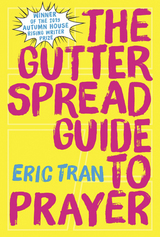
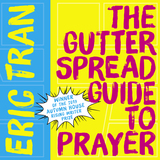
READERS
Browse our collection.
PUBLISHERS
See BiblioVault's publisher services.
STUDENT SERVICES
Files for college accessibility offices.
UChicago Accessibility Resources
home | accessibility | search | about | contact us
BiblioVault ® 2001 - 2024
The University of Chicago Press









